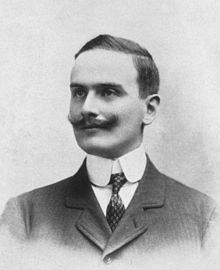Negri, Adelchi

All medicine and biology students know his name, closely related to the infectious rabies virus; Adelchi Negri, born in Perugia in 1876, graduated at Pavia University in 1900 with a dissertation on General Pathology, during a time of intellectual excitement caused by the discovery of the Golgi apparatus.
Young Negri was immediately involved in research over at Golgi’s institute, and was the first to discover that Golgi’s apparatus was not specific to nervous cells but could be found in other eukaryotic cells.
His international fame is however connected to his rabies research. In 1902, Golgi himself directed him to study the disease, and in particular to search for typical neuropathological alterations. By examining infected rabbits’ brains, sectioned and stained with the Mann method, Negri observed peculiar formations inside the nervous cells. After repeating the experiments a number of times, Negri determined that he had identified alterations specific to the infection and notified his results to the Medical surgical society of Pavia.
The discovery of these formations, called “Negri bodies”, proved incredibly useful in quickly diagnosing suspected rabid animals, and therefore leading to timely vaccination and treatment of those who had been bitten by the infected animal.
Negri became an active promoter of the countryside reclamation efforts (aiming at eradicating malaria in Lombardy) and of the actuation of public health measures during a cholera outbreak. He was decidedly destined to a brilliant career as a pathologist, had he not been struck down by a devastating tubercular encephalo myelitis in 1912.
